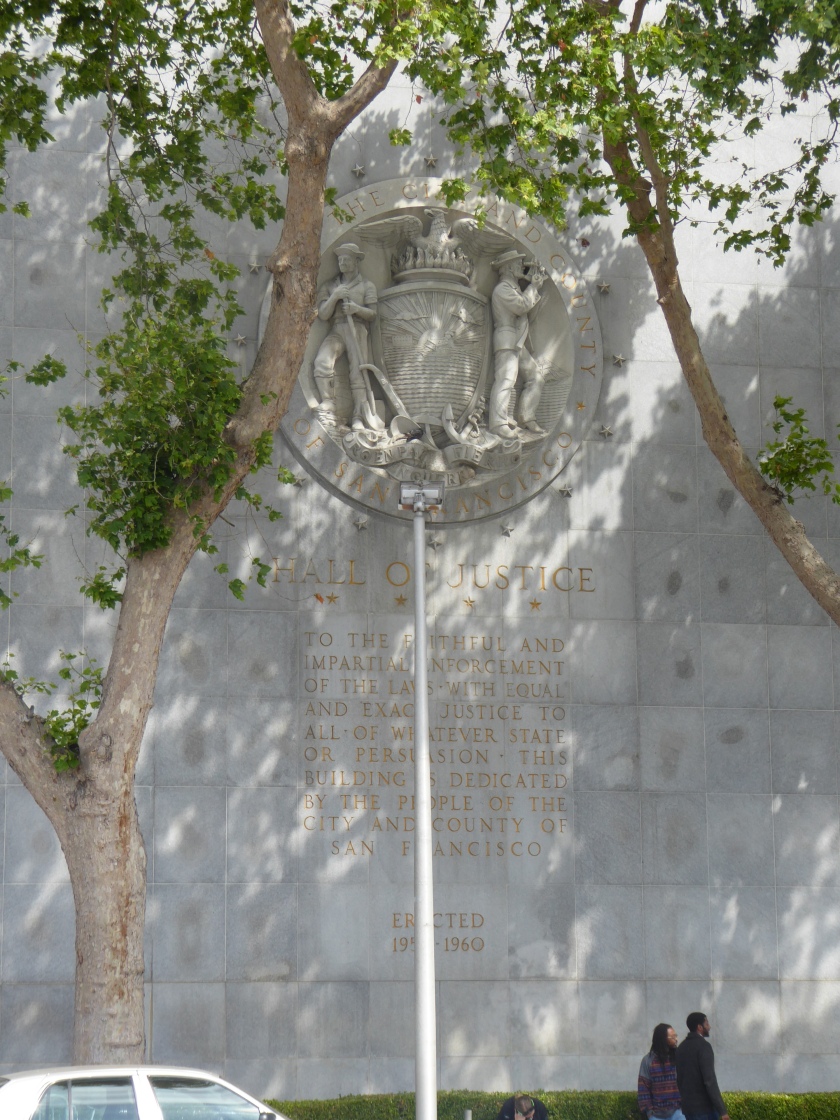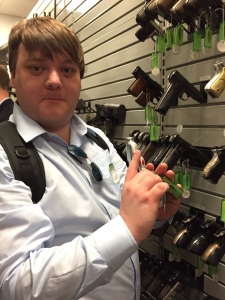 San Quentin State Prison is the oldest correctional facility in California, currently housing around 3,800 inmates. This is the only prison housing death row inmates in the state, though the last execution by lethal injection took place around 2005. The group met with Lieutenant Sam Robinson, whom with many years of experience including 10 years working on death row had extensive knowledge of the prison and its history.
San Quentin State Prison is the oldest correctional facility in California, currently housing around 3,800 inmates. This is the only prison housing death row inmates in the state, though the last execution by lethal injection took place around 2005. The group met with Lieutenant Sam Robinson, whom with many years of experience including 10 years working on death row had extensive knowledge of the prison and its history.
He was extremely open regarding his experiences of the prison and the inmates; this was particularly helpful when asking the several questions the group had about a range of topics. Once cleared by security, we entered into a large open space surrounded by several buildings, to the left was the unit housing the most dangerous of offenders, the death row inmates, Lt. Robinson named just a few well-known death row inmates at the facility. To the right was the church opening its doors to all religions from Rastafarian to Catholic, as the only religious building in the prison, it was described as a place everyone could come together.
Lt. Robinson then introduced the group to six current inmates of the prison varying in age and background, these particular inmates were all serving life sentences for varying crimes. They were also very open and honest when sharing with us their varying experiences not only of San Quentin itself, but also of the American Criminal Justice System throughout their lives; from as early as juvenile court and juvenile correctional facilities.
The inmates praised the work being implemented at San Quentin, particularly the programmes provided in order for prisoners to better themselves whilst serving their sentences, the programmes within the prison range from parenting classes to lessons in reading and writing with the aim to aid inmates when released back into the community, with the hope of reducing the chance of recidivism. Hearing of the varying experiences and thoughts of the six life prisoners at San Quentin provided each individual within the group with invaluable knowledge and certainly gave us a lot to think about regarding the criminal justice system in America.
Continuing on our tour of the facility, we saw first hand the hospital on site providing a range of services to prisoners from x-ray to mental health services, throughout which it was clear to see the strong relationship between staff and inmates. Lt. Robinson then took us through the facilities in which inmates are employed to manufacture furniture and mattresses; the working environment felt like any other and prisoners were clearly enjoying their work.
The group then took a short walk to the San Quentin News office; the newspaper employs around 12 members of staff and is a way to keep all inmates informed of the goings on within the prison.
The tour continued with a first-hand experience of life living in a prison cell, the group were shown a cell block housing hundreds of inmates and were allowed the opportunity to enter a cell comprising of a bunk bed for two inmates and very little space to move around. After experiencing the prison dining halls and the impressive art of a previous inmate covering the walls, we had reached the end of the tour.
Overall, the experience of San Quentin was indescribable. Seeing first hand the workings of the prison, the programmes available for prisoners and the relationship between staff and prisoners was particularly intriguing. Hearing of the experiences of the six inmates serving life within the prison will be something that will stay with us in years to come, an experience we will certainly take with us throughout our lives.
Sent by Alisha Starmer.








